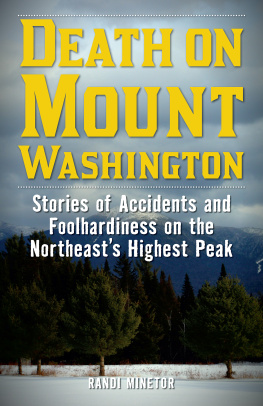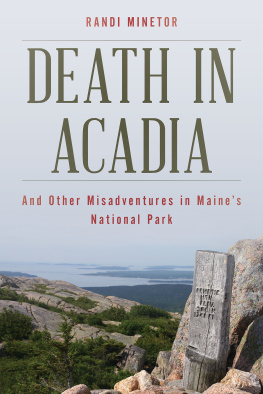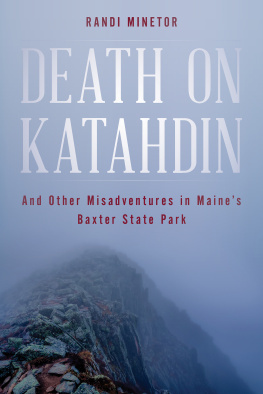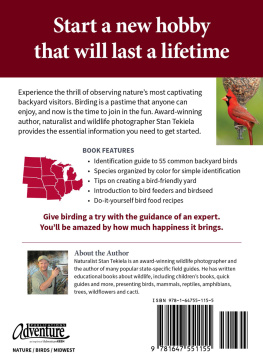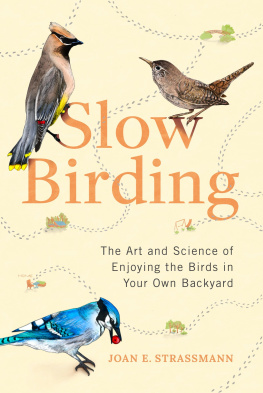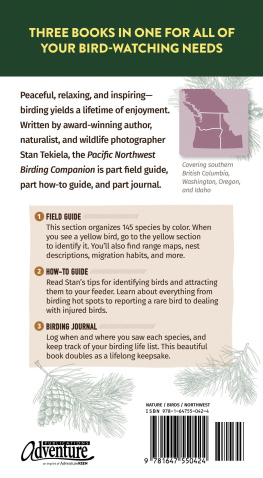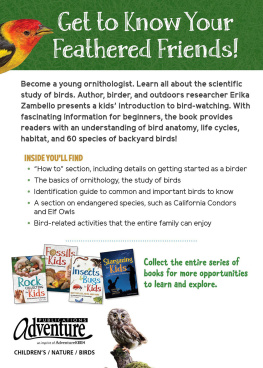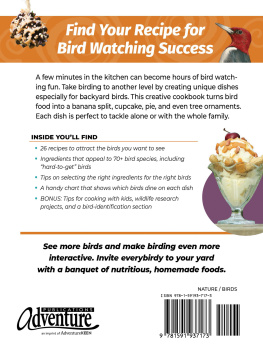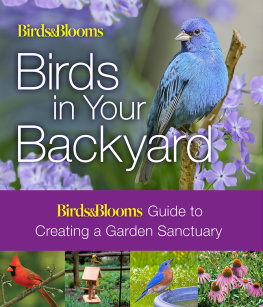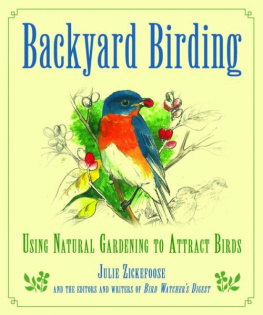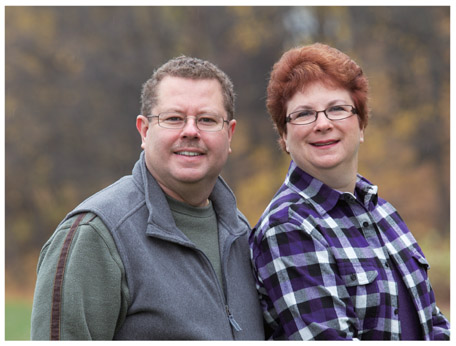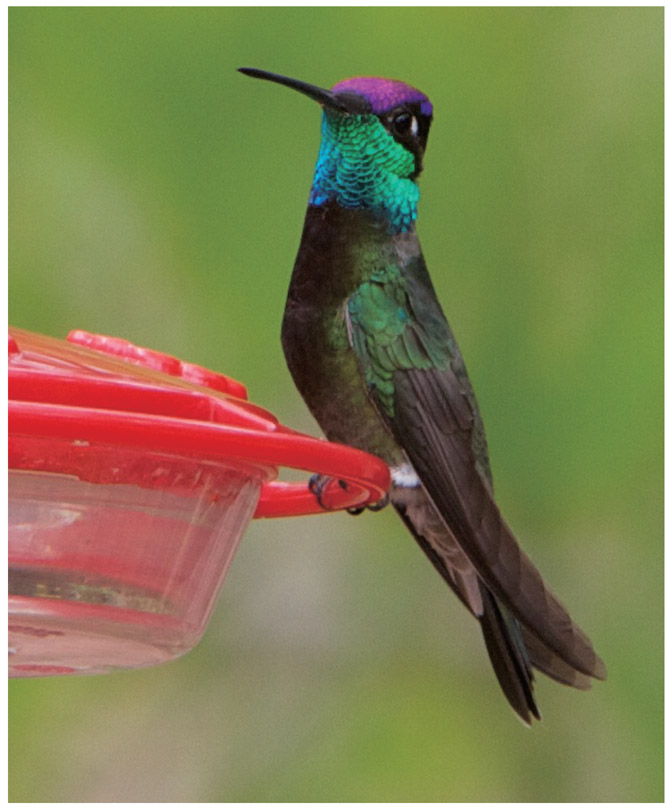RANDI AND NIC MINETOR crisscross the country regularly to research and shoot photos for their books on birds, hiking, history and Americas national parks. Backyard Birding is their first book for Lyons Press.
Randi and Nic have worked together on sixteen books to date, including five FalconGuides National Park Pocket Guides to Great Smoky Mountains, Acadia, Zion and Bryce Canyon, and Everglades National Parks, and Gulf Islands National Seashore. Their work also includes Globe Pequot Presss Timeline Guides series, with five books completed: Washington, DC, Gettysburg, Fredericksburg, New York Immigrant Experience and New Orleans. Randi wrote five books in FalconGuides Best Easy Day Hikes series, for Rochester, Buffalo, Syracuse, Albany, and the Hudson River Valley, for which Nic provided cover and website photos. Randi is also the author of The Passport To Your National Parks Companion Guides series, and she writes a column as the National Parks Examiner on Examiner.com.
When not on the road, Nic is the lighting designer for Eastman Opera Theatre, theatrical productions at the National Technical Institute for the Deaf, and Mercury Opera Rochester, as well as lighting director for the PBS series Second Opinion. Randi owns a writing and public relations firm serving corporate and non-profit clients.
The Minetors live in Rochester, NY, where they have participated in migratory and breeding bird research projects for The Nature Conservancy and the New York State Department of Environmental Conservation.
Birders across the country continue to be delighted to share their sightings, skills, and backyards with fellow enthusiasts. We cant say enough about all the people who opened their yards and nurseries to us, and who pointed us in the direction of our targeted birds, plants, shrubs, trees, and landscapes.
Many thanks to the members of the Rochester Birding Association and those who participate in the Geneseebirds e-mail discussion group in western New York State, as well as friends and neighbors in western New York and far beyond. We thank Randy Anderson, Pam Bartlemus, Bob Beal, Doug Beattie, Linda Bender, Nancy Casper, John Colagrosso, Amy and Jim Cot, Laurie Dirkx, Karl Goldsmith, Kevin Griffith, Lucretia Grosshans, Bonnie Hawk and Robin Hamm, Bob and Muriel Haggerty, Diane Henderson, Karen Huey, Vicki Kadow, Jim Kimball, Paula and Rich Landis, Ann McCracken, Jane Miller, Gay Mills, Jim Moser, John and Suzanne Olson, Andy Rueby, Martha and Peter Schermerhorn, Gretchen Voss, and Bethany Zinni, all of whom allowed us into their backyards to photograph birds, feeders, and gardens.
Our quest to find native plant species across the country led us to Rockingtree Floral & Garden Center in Sturgis, South Dakota, where owner Carol Hallock and her staff provided tremendous assistance. We are also grateful to The Bird House in Rochester for allowing us to photograph some of the items in their stores extensive inventory.
Southeastern Arizona is a magical place with many more than its fair share of hummingbird and oriole species. Luckily for its human visitors, several homeowners open their property to bird enthusiasts so that we can see these extraordinary birds. We cant say enough about Mary Jo Ballator and Ash Canyon Bed & Breakfast in Hereford, Arizona; the Paton residence in Patagonia, Arizonanow managed by Tucson Audubon Society with participation by the Paton family; and Madera Kubo Bed & Breakfast in Madera Canyon, Arizona.
In addition to so many individual backyards, we spent a great deal of time in Americas backyardat last count, we shot photos for this book in no less than seventeen national parks, monuments, and historic sites, from Cape Cod to Zion. We extend a special thanks to all of the national park rangers and volunteers who directed us to birding locations, blooming wildflowers, and shrubs full of berries across the nation.
We thank all of our relatives and friends who support us with their hospitality during our travels and their good wishes at home: my brother and sister-in-law, Mike Bassow and Merry Guild; Nics mother, June Minetor; our friends and hosts Dawn and Kevin Wiley, and Ken Horowitz and Rose-Anne Moore; Martin Winer, our itinerant house-sitter and dear friend; and so many others.
Many, many thanks to Cynthia Hughes, Tracee Williams, and the team at Globe Pequot Press for their work in bringing this book to fruition. Regina Ryan, agent extraordinaire, continues to shepherd us through one project after another with such grace and goodwill.
Finally, we must acknowledge the tools that make our trade such a pleasure: Apple Macintosh laptops and iPhones, Canon photographic equipment, and our 2003 Subaru Outback wagon that slipped past the 130,000-mile mark somewhere between Mount Pleasant, Iowa, and Moose, Wyoming.
A male magnificent hummingbird rests in the sunlight
APPENDIX A: SEASONAL BIRDING CHECKLISTS
Spring checklist
Feeders and seed
Take all of your feeders down and clean them thoroughly. Disinfect with a weak solution of one part household bleach to ten parts water.
Get your hummingbird and oriole feeders out: early April for the southern states, and early May in the North.
Discard any remaining butcher suet as soon as daily temperatures rise above 40 degrees. Switch to packaged all season or no melt suet blends.
Get out your mealworm feeder, and add mealworms to attract bluebirds. Use live mealworms until the weather gets too hot for them.
Birdbaths and ponds
Remove water defrosters from your birdbaths. Clean and store them for next winter.
Clean your birdbaths and refill them.
Do a wet run of your water circulators (pumps) to make sure theyre functioning properly. Check all electrical connections, and repair or replace if necessary.
Skim winter detritus off of the surface of your pond. Add barley or other algae inhibitor.
Nest boxes
Check all your nesting boxes for signs that birds roosted in them over the winter.
If the boxes have been used, scrape out and clean them before birds begin nesting.
Put out nesting material in suet cages or seed wreaths, or on its own.
Garden
Its finally time to snip last years blossoms from your perennials.
Pick or prune off any remaining berries from last years crop, and discard.
Rake any twigs or branches that fell over the winter into your brush pile.
Rake up and discard the winters seed shells and rejected seed under your feeders.
Pull any new shoots under your feeders that may be sprouting from last years birdseed. Watch for possible sunflower sprouts, and transplant them to your perennial garden.
Plan where youd like to add annuals, new perennials, shrubs, or trees. Make a list to take to garden centers.
Have fun planting!
Summer checklist
Feeders and seed
As weather warms, change the nectar in your hummingbird feeders every three days.
Change the orange halves on your oriole feeder every few days as well, to keep oranges from generating mold.
After heavy rains or in very humid weather, change the seed in your feeders to keep it from becoming moldy.


